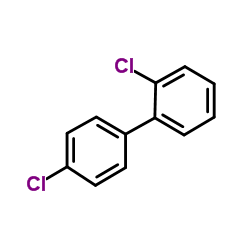Sorption of 2,4'-dichlorobiphenyl and fluoranthene to a marine sediment amended with different types of black carbon.
Robert M Burgess, Stephan A Ryba, Monique M Perron, Rex Tien, Laura M Thibodeau, Mark G Cantwell
文献索引:Environ. Toxicol. Chem. 23(11) , 2534-44, (2004)
全文:HTML全文
摘要
Recent studies demonstrate that sedimentary black carbon (BC) affects the sorption of some hydrophobic organic contaminants (HOCs) to a greater extent than sedimentary organic carbon (OC). Among HOC, polycyclic aromatic hydrocarbons (PAHs) are known to interact extensively with BC. Currently, data on the sorption of various kinds of HOCs to different types of BC are limited. In this study, we amended a marine sediment with BC from several different sources, humic acid, and inert sand. Equilibration studies with 14C fluoranthene and the polychlorinated biphenyl (PCB) 3H 2,4'-dichlorinated biphenyl were performed to determine the magnitude of sorption as a function of contaminant and BC type. The magnitude of sorption to the BC-amended sediments was greater for the PAH than the PCB as compared to the sediment alone, humic acid, and sand. For example, differences between the log partition coefficient (K(P)) for the PAH and PCB ranged from 0.41 to 0.69 log units for humic acid and sand treatments, while differences ranged from 0.88 to 1.57 log units for the BC-amended sediments. As a result, BC-normalized partition coefficients (log K(BC)) for the PAH averaged 6.41, whereas the PCB log K(BC) values averaged 5.33. These results demonstrate that PAH sorption and most likely bioavailability are influenced strongly by the presence of BC of different types, while sorption of a nonplanar PCB was affected to a lesser degree.
相关化合物
| 结构式 | 名称/CAS号 | 分子式 | 全部文献 |
|---|---|---|---|
 |
2,4'-二氯联苯
CAS:34883-43-7 |
C12H8Cl2 |
|
Metabolism of dichlorobiphenyls by hepatic microsomal cytoch...
1981-03-15 [Biochem. Pharmacol. 30(6) , 577-88, (1981)] |
|
Microbial growth on dichlorobiphenyls chlorinated on both ri...
2001-04-01 [Appl. Environ. Microbiol. 67(4) , 1953-5, (2001)] |
|
Temperature-dependent biotransformation of 2,4'-dichlorobiph...
2007-04-01 [Lett. Appl. Microbiol. 44(4) , 447-53, (2007)] |
|
[Surface chemical behavior of 2,4-dichlorophenol in presence...
2005-04-01 [Ying Yong Sheng Tai Xue Bao 16(4) , 688-92, (2005)] |
|
Effect of three polychlorinated biphenyls on f-met-leu-phe-i...
1998-09-15 [Toxicol. Lett. 98(3) , 195-202, (1998)] |